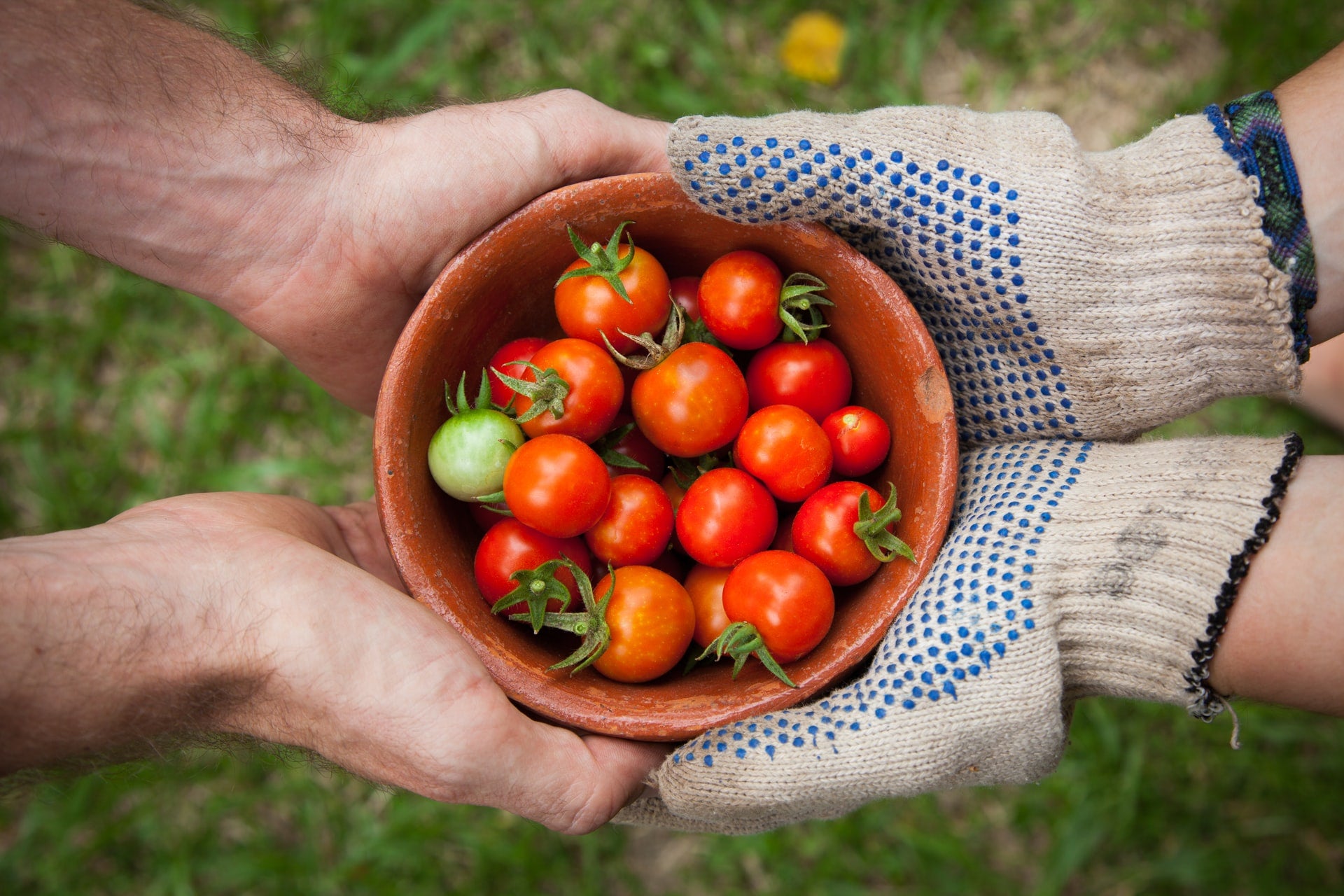Support Structures
Guest Post : Margaret Dron, My Garden Manager

From time to time, we all need a little support, and that certainly rings true for you tomato plants! Below are four easy solutions for taming those unruly tomato plants, however, there are a few things that you should consider before choosing the best solution for you and your garden. For example, how much room do you have? For small garden spaces, it will be better to choose a compact solution like a cage and ladder. These provide a narrower footprint than other support options and are stackable when it’s time to store them.
Another consideration is which type of tomato plants are you growing - determinate or indeterminate? Indeterminate varieties need a taller support. Determinate varieties can often get by with something smaller.
Will you be pruning the ‘suckers’ off your plants to reduce foliage? If so, give ladders, weaves or tripods a try. If you letting your plants grow wild and free, you might prefer a cage-style support.
Without further ado, let’s get to it: the what’s what of tomato support:
 Cages and ladders: Cylindrical or square wire cages are the most common way to keep tomatoes upright if you want to avoid tying stems. Instead, the walls of the cage are used to support your leaves and stems. Something to keep in mind though is that although they are easy, they’re often not big enough for indeterminate varieties.
Cages and ladders: Cylindrical or square wire cages are the most common way to keep tomatoes upright if you want to avoid tying stems. Instead, the walls of the cage are used to support your leaves and stems. Something to keep in mind though is that although they are easy, they’re often not big enough for indeterminate varieties.
 Florida weave and trellis: Often used commercially for determinate varieties, this training technique supports tomatoes with twine that’s woven horizontally between rows of stakes. This makes cleanup a dream at the end of the season, as you can just snip the string at the end and compost the plants. For this technique, tomato transplants (at the seedling stage) get planted about two feet apart in single rows within raised beds. I’ve also done this really successfully between two large planters on my patio – don’t worry about how the farmers do it, it’s great in any growing space! Drive a stake into the soil at each end of the row and between each plant in the row.
Florida weave and trellis: Often used commercially for determinate varieties, this training technique supports tomatoes with twine that’s woven horizontally between rows of stakes. This makes cleanup a dream at the end of the season, as you can just snip the string at the end and compost the plants. For this technique, tomato transplants (at the seedling stage) get planted about two feet apart in single rows within raised beds. I’ve also done this really successfully between two large planters on my patio – don’t worry about how the farmers do it, it’s great in any growing space! Drive a stake into the soil at each end of the row and between each plant in the row.
When the transplants are roughly about a foot (30 cm) high, tie twine to the first stake at about 6 inches (15 cm) high and loop it around the next stake at the same height. Make a double loop around the last stake for strength, and loop your way down the opposite side of the bed, keeping tension on the line all the way down. When you get back to the first stake, tie off, and cut the twine. Depending on how fast your plants grow and how heavy they get, you’ll need to run another line of twine about 6 inches higher every week or so, in order to keep supporting your tomato plants.
Stakes: This support system works exactly as it sounds: grab stakes, hammer them into the ground, and grow! Okay, maybe it’s not quite that simple, but pretty darn close. As your plant grows, tie the stems loosely to the stakes with fabric strips, twine or zip ties.
T ripods: These take a little longer to build, but really pretty once up, and they’re incredibly durable. Fastening three stakes into a tripod provides extra stability for plants located in a windy region. This is especially true once you’ve trained your plant to wind up the stake, as the weight of the plant helps further anchor the tripod to the ground. Do your tomatoes and yourself a favour, and wrap a nice long string of twine loosely around the outside of the tripod to act as a trellis.
ripods: These take a little longer to build, but really pretty once up, and they’re incredibly durable. Fastening three stakes into a tripod provides extra stability for plants located in a windy region. This is especially true once you’ve trained your plant to wind up the stake, as the weight of the plant helps further anchor the tripod to the ground. Do your tomatoes and yourself a favour, and wrap a nice long string of twine loosely around the outside of the tripod to act as a trellis.
Just tie it at the top and then spiral it down approximately every 6-inches (15 cm) and then simply tie the other end of your string to the base. It makes training your plant SO much easier!
With a little time and support, your plants will thank you delicious, vine ripened fresh tomatoes. For more step-by-step, to the point advice on growing tomatoes at home from seed to storage, be sure to download the free PDF guide GardenManager.com is offering on their site until the end of June. Whether you're new to gardening, or a tomato growing pro, these tips will help you grow your own with ease, so be sure to download your copy today at https://www.gardenmanager.com/tomatogrowingguide
